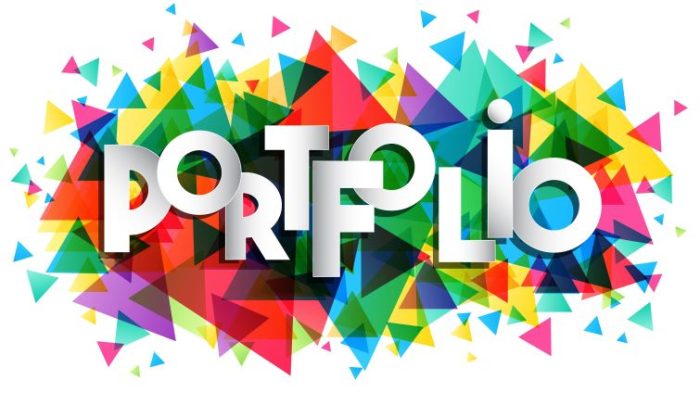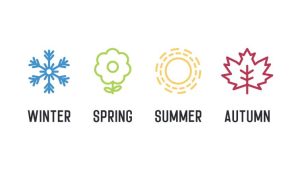Building a Freelance Portfolio That Attracts Full-Time Roles
 Publié le 4 October 2024
Publié le 4 October 2024
Showcase your professional achievement by building a freelance portfolio that attracts full-time roles.
Freelancing offers flexibility, independence, and the ability to work on various projects across industries. For many professionals, freelance projects are also a stepping stone to full-time employment. Building a strong freelance portfolio not only showcases your skills but also demonstrates your ability to take on real-world challenges. In this article, we’ll explore how to build a freelance portfolio that stands out, the types of digital portfolios you can create, and how freelancing jobs can help you secure full-time roles.
Freelance Projects as Building Blocks for a Strong Portfolio
Freelance projects are the foundation of any successful freelance portfolio. These projects give you the opportunity to showcase your skills in a real-world setting, allowing potential employers to see firsthand what you can deliver. Each project you complete represents a unique challenge you’ve tackled, whether it’s meeting a client’s specific needs, working under a tight deadline, or finding creative solutions to unexpected problems. Freelance projects are essential for building a portfolio that highlights your skills and attracts potential employers.
- Freelance projects showcase your skills in real-world settings, proving what you can deliver.
- Each project demonstrates your ability to meet client needs, work under deadlines, and find creative solutions.
- Diverse projects across industries add depth to your portfolio, showing versatility and adaptability.
- Problem-solving under pressure highlights your practical experience and readiness for full-time roles.
- Long-term client relationships can serve as references and lead to repeat business or referrals.
- Freelance work builds your professional identity, positioning you for future full-time opportunities.
The Importance of a Freelance Portfolio
A freelance portfolio is essential for showcasing your best work to potential clients and employers. It’s a curated collection of your completed projects that demonstrate your skills and expertise. A well-organized digital portfolio makes it easier for hiring managers to see your value at a glance.
Moreover, employers are often more impressed by actual work samples than lengthy resumes. It’s a more convincing argument for hiring you in a full-time role when you can show them how you’ve solved real problems through your freelance projects. Whether you specialize in digital marketing, graphic design, or web development, building a portfolio through freelancing jobs is a great strategy to make yourself more marketable.
Types of Digital Portfolios
Depending on your industry, the type of digital portfolio you create may vary. Here are a few types of portfolios that are common in freelancing:
1. Digital Marketing Portfolio
A digital marketing portfolio highlights campaigns you’ve worked on, including SEO, social media, content marketing, and paid ads. It’s important to include case studies that show how your work improved traffic, conversions, or customer engagement. Ensure that your results are quantifiable, as numbers help to back up your claims. If you plan on working in the digital marketing field full-time, employers will want to see specific examples of how you have handled marketing strategies for various clients.
2. Graphic Design Portfolio
A graphic design portfolio showcases logos, branding, and visual designs you’ve created. Use a visual-first approach to display high-quality images of your work, with brief descriptions of the projects and the challenges you overcame. Clients and potential employers look for creativity and attention to detail in graphic design portfolios, so make sure your portfolio reflects your best work and the diversity of your design skills.
3. Content Writing Portfolio
For freelance writers, a content writing portfolio is essential to show a range of writing styles, from blog posts to technical documents. Your portfolio should include live links or downloadable PDFs of your best pieces, and it’s wise to categorize them by niche, such as health, technology, or lifestyle. If your goal is to secure a full-time role in writing or content creation, the variety and quality of your work are essential.
4. Web Development Portfolio
A web development portfolio should feature live websites you’ve worked on or code samples for front-end and back-end projects. In addition to the aesthetics of the sites, hiring managers often look for functionality and responsiveness. Your web development portfolio should include examples of custom coding, integrations with third-party systems, and website performance optimization.
How to Build a Freelance Portfolio
Creating a freelance portfolio that captures attention requires more than just adding your latest projects. It should be organized and optimized to attract potential employers. Here’s how to build a freelance portfolio that stands out:
1. Start With Your Best Work
Always lead with the strongest examples of your work. Whether you’ve worked on small freelancing jobs or large projects, choose the ones that best represent your abilities. If you’ve received positive feedback from clients or achieved significant results, be sure to highlight that information in your portfolio.
2. Use a Clean Layout
Your digital portfolio should be easy to navigate. A clean, simple layout with clear categories allows potential employers to find what they need quickly. Whether you’re using an online portfolio platform or building your own website, make sure the design is professional and intuitive.
3. Incorporate Case Studies
For many freelance projects, case studies offer a detailed look into your problem-solving abilities. Include a short summary of the project, the challenges you faced, and how you overcame them. Highlight the results in a measurable way, such as increased sales, improved employee performance, or better user engagement.
4. Regularly Update Your Portfolio
Regularly update your portfolio to include fresh content as you complete more freelancing jobs. Removing outdated or lower-quality work will keep your portfolio relevant and impressive. Freelancers who frequently update their portfolios are more likely to attract attention from potential employers.
5. Leverage Freelance Platforms
Online freelance platforms often provide you with a built-in portfolio section. Use these platforms to display your best work, especially if you are just starting out and don’t yet have your own portfolio website.
Benefits of Freelance Projects for Full-Time Roles
Freelancing can serve as a launchpad for full-time employment in several ways. Here are some of the key benefits of using freelance projects to land a full-time role:
1. Building Real-World Experience
Freelancing jobs allow you to gain hands-on experience, which is often more valuable than theoretical knowledge. You’ll be able to show potential employers that you’ve worked on real projects with tangible results, which can be a significant advantage when applying for full-time positions.
2. Expanding Your Network
Through freelance projects, you’ll interact with clients, peers, and professionals in your industry. Networking is crucial in any career, and the connections you make during freelancing can lead to full-time opportunities. Building a good reputation within your professional network will open doors to future job prospects.
3. Demonstrating Your Versatility
Freelancers often work with a variety of clients from different industries, giving them broad experience in multiple areas. This versatility can make you an attractive candidate for full-time roles, as employers value the ability to adapt to different tasks and challenges.
4. Showcasing Your Self-Motivation
Freelancing requires a high level of self-motivation and discipline. When hiring for full-time roles, employers look for individuals who can work independently and meet deadlines without needing constant supervision. Freelance projects are a great way to demonstrate these skills in action.
Tools to Strengthen Your Freelance Portfolio
Enhancing your portfolio’s impact goes beyond showcasing your work. Leveraging technology, including AI tools, can streamline your workflow and allow you to present your projects more effectively, making it easier for potential employers to see the value you bring. Below are some types of tools that can elevate your portfolio:
Design and Marketing Optimization Tools
Incorporating automation tools into your design or marketing work can significantly improve your productivity and quality of results. These tools enable you to refine your processes, helping you deliver polished work in less time. This efficiency is particularly attractive to employers seeking professionals who can deliver high-quality outcomes under tight deadlines.
Project Management and Client Relationship Tools
Using project management software alongside sales CRM software to handle client relationships, deadlines, and tasks adds an extra layer of professionalism to your freelance business. Showcasing your ability to manage projects efficiently, while keeping track of milestones and client interactions, reflects well in your portfolio and demonstrates your readiness for structured, full-time roles.
Analytics and Performance Tracking Tools
Including examples of how you’ve used analytics tools to measure the performance of your projects can give your portfolio an edge. Whether you are tracking website traffic, engagement on social media campaigns, or user interaction with an app, showing that you understand how to interpret data and improve based on performance insights is a big plus for employers.
Collaboration and Communication Platforms
Using collaboration tools, such as those for video conferencing, task sharing, and real-time editing, demonstrates your ability to work efficiently in team settings. This is particularly important for employers looking for candidates who can seamlessly transition into a full-time role within an organization that emphasizes teamwork and communication.
Creative Portfolio Platforms
There are several portfolio-building platforms specifically designed for creatives. Tools like Behance or Dribbble provide built-in communities where you can share your work and gain feedback. These platforms also offer a ready-made structure to display your work visually, making it easier to attract both freelance clients and full-time job offers.
Conclusion
Building a freelance portfolio is one of the most effective ways to secure full-time employment. Whether you’re working on digital marketing, graphic design, or web development, your freelance portfolio serves as a living testament to your skills and experience. It’s essential to regularly update it with your best work, keep the layout clean, and incorporate relevant case studies. Freelancing jobs provide valuable real-world experience, expand your network, and demonstrate your ability to self-manage—all qualities that potential employers value.
In the competitive job market, a well-crafted digital portfolio can make all the difference in landing your next full-time role. By showcasing your freelance projects, you’ll prove that you not only have the skills but also the experience to succeed.







